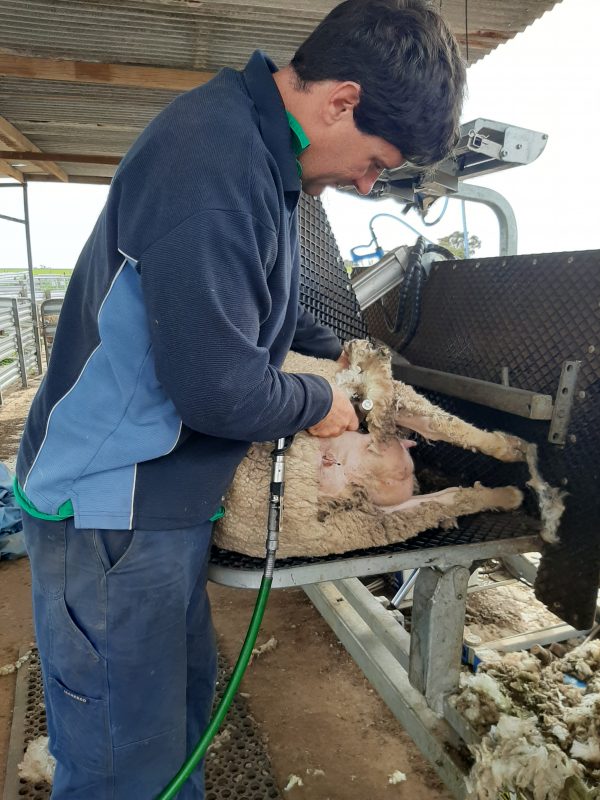Easy Choice When all Added up
DAVID AGNEW
STANSBURY, SOUTH AUSTRALIA
DAVID Agnew is reaping the rewards as a result of his Dohne operation, with greater things on the horizon.
At his property, ‘Rosedene’, situated in Stansbury, on the picturesque south-east coast of the Yorke Peninsula, South Australia, Mr Agnew runs sheep on approximately 1,000 hectares alongside 2,225 hectares of cereal cropping.
“We stick to the traditional rotation of one year crop, one year pasture with our sheep whereas a lot of other people in our district have started to lean towards continuous cropping. The rotational system works very well in our climate,” said Mr Agnew.
Running a self-replacing flock, Mr Agnew focuses on fertility.
“We’ve been running Dohnes since 2004 and they still continue to impress me. Currently, I run 1,500 purebred Dohne breeders and next year I’m looking to be at full capacity running 1,800 head.”
Initially directing his focus to achieving solid body weight, Mr Agnew is now looking to fully experience what the Dohne can provide maternally, with a goal of increasing his already consistent lambing percentage.
“Each year, we comfortably and consistently would achieve 125% lambing. Of course, I’m happy with this result but my experience with the breed leads me to believe that I can achieve close to 150% if I put in as much ground work as the ewes do in terms of maintenance and good feed,” said Mr Agnew.
“Whatever it is you give to them, I think they give you double in return.”
Whilst fertility is an important trait for Mr Agnew, he acknowledges that there is plenty more the Dohne has to offer. “We really utilise ASBVs when selecting rams so we can benefit from the wool side of things as well – they really are the ‘combination’ sheep so regardless of what the focus is, I know you’re going to benefit from so much more,” said Mr Agnew.
“The highest price we got for Dohne lambs last year was $244 a head and we’re currently cutting around 5kg of wool but in the years to come, I only expect this to rise. Being able to tick all boxes with one breed is something every farmer is looking for. Dohnes are the ultimate hybrid.”
Mr Agnew is looking forward to working at boosting his numbers and benefitting from the breed at its full capacity. Proving to be “tougher than a lot of the other breeds I’ve worked with”, he is expecting to achieve all goals set in regards to boosting lambing percentages.


Original article written by Nicola Wood, October 2020.










 Facebook
Facebook YouTube
YouTube Instagram
Instagram